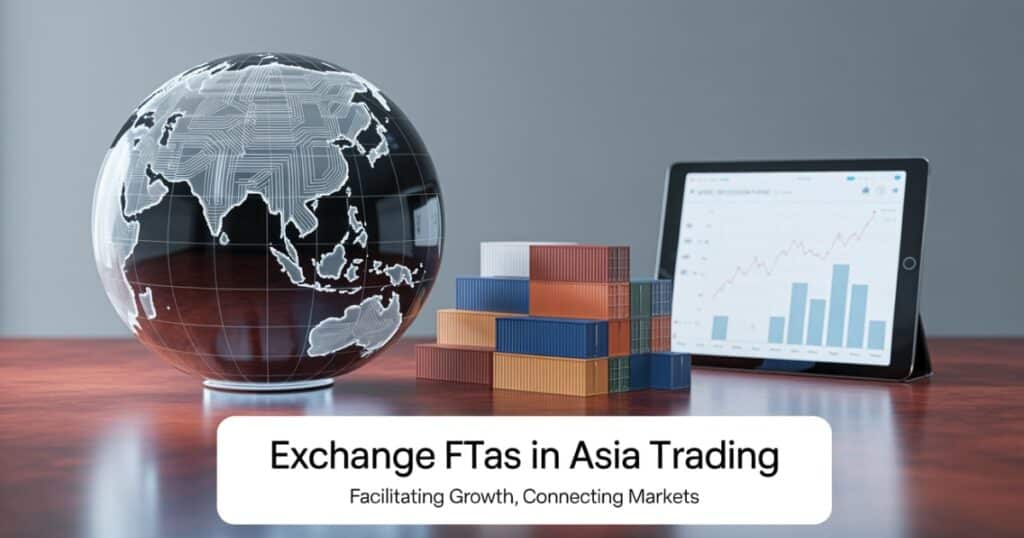In today’s interconnected world, Free Trade Agreements (FTAs) play a crucial role in shaping the economic landscape. Particularly in Asia, these agreements facilitate trade, reduce barriers, and enhance cooperation among countries.
This blog post delves deep into how FTAs work, their benefits, challenges, and practical tips for businesses engaging in exchange FTAs in Asia trading.
Understanding Free Trade Agreements (FTAs)
Free Trade Agreements are treaties between two or more countries that aim to eliminate or reduce trade barriers. This includes tariffs, import quotas, and preferences on certain goods and services. FTAs promote international trade by creating a more favorable environment for exporters and importers.
Definition and Purpose
The primary purpose of FTAs is to foster economic growth by:
- Reducing tariffs on goods and services.
- Encouraging foreign investment.
- Enhancing competition and innovation.
- Facilitating market access for businesses.
Types of FTAs
FTAs can be categorized into several types:
- Bilateral Agreements: Involve two countries. For example, the India-Singapore CECA focuses on trade between those two nations.
- Multilateral Agreements: Involve more than two countries. The RCEP is a prime example, comprising 15 Asia-Pacific nations.
Key FTAs in Asia
Asia is home to several significant FTAs that have reshaped trade dynamics. Here’s a closer look at some of the most impactful agreements.
Regional Comprehensive Economic Partnership (RCEP)
The RCEP, effective from January 2022, is one of the largest FTAs globally, covering nearly 30% of the world’s population and 29% of global GDP. Member countries include:
- China
- Japan
- South Korea
- Australia
- New Zealand
- The ten ASEAN nations
Impact: RCEP aims to enhance trade efficiency and economic cooperation across the region, significantly benefiting e-commerce and digital trade.
ASEAN Free Trade Area (AFTA)
Established in 1992, AFTA focuses on reducing tariffs among ASEAN members. The agreement allows member states to:
- Achieve a combined GDP of over $3 trillion.
- Enhance intra-regional trade, which now constitutes approximately 25% of ASEAN’s total trade.
Achievements: AFTA has successfully reduced tariffs on goods to between 0-5%, making trade more accessible within Southeast Asia.
India-Singapore Comprehensive Economic Cooperation Agreement (CECA)
This agreement, effective since 2005, aims to strengthen bilateral trade in goods, services, and investments. Key features include:
- Elimination of tariffs on over 90% of goods.
- Improved market access for services and investments.
Trade Statistics: India’s trade with Singapore reached approximately $25 billion in recent years, showcasing the agreement’s effectiveness.
China-ASEAN Free Trade Agreement
This agreement, effective since 2010, has enhanced economic ties between China and ASEAN countries. It covers:
- Tariff reductions on over 90% of goods.
- Cooperation in areas like e-commerce and investment.
Significance: Trade between China and ASEAN surged to about $641 billion in 2020, reflecting the agreement’s impact.
Comprehensive and Progressive Agreement for Trans-Pacific Partnership (CPTPP)
The CPTPP is a trade agreement between 11 countries that aims to reduce tariffs and foster trade. Key aspects include:
- Comprehensive market access across member countries.
- Enhanced labor and environmental standards.
Implications: The CPTPP stands to increase trade among member nations by approximately $147 billion by 2030.
See Also: Team Disquantified: What It Means and Why It Matters
Benefits of Utilizing FTAs in Asia
Engaging in FTA Asia trading offers numerous advantages for businesses:
Cost Reduction
By eliminating tariffs, FTAs significantly lower the cost of imported goods. For instance, companies utilizing FTAs can save up to 30% on tariffs, making products more competitive in the market.
Streamlined Customs Processes
FTAs often include provisions for expedited customs clearance. This means:
- Reduced processing times at borders.
- Lower transportation costs due to faster delivery.
Market Expansion
FTAs provide access to new markets, allowing businesses to:
- Tap into a larger customer base.
- Diversify their revenue streams.
Enhanced Quality Standards
FTAs often promote higher quality standards, encouraging businesses to improve their products. This leads to:
- Increased consumer trust.
- Better market positioning.
Support for SMEs
Small and medium enterprises (SMEs) benefit significantly from FTAs. With reduced barriers, SMEs can:
- Compete more effectively against larger firms.
- Access resources and support from government programs.
Navigating the Exchange of Goods and Services Under FTAs
For businesses looking to engage in FTAs Asia trading, understanding how to navigate these agreements is crucial.
Qualifying Products
To benefit from FTAs, businesses must ensure their products qualify. This involves:
- Confirming that goods meet origin criteria.
- Understanding specific product categories covered under the FTA.
Understanding FTA Regulations
Each FTA has its own set of regulations. Businesses should:
- Familiarize themselves with the specific rules of each agreement.
- Stay updated on changes to trade policies.
Obtaining a Certificate of Origin (COO)
A COO is essential for products to qualify for tariff reductions. Businesses need to:
- Apply for a COO through designated authorities.
- Maintain accurate records to support the application.
Preparing Shipping Documentation
Proper documentation is vital for smooth transactions. Essential documents include:
- Commercial invoices.
- Packing lists.
- Bills of lading.
Collaborating with Reliable Partners
Working with trustworthy partners is crucial for success in FTAs Asia trading. Tips include:
- Conducting due diligence on potential partners.
- Building strong relationships based on trust and transparency.
See Also: Unveiling Consultant WIUFAMCTA JIVBCQU: A New Era in Business Consulting
Common Challenges in Implementing FTAs
While FTAs offer numerous benefits, businesses often face challenges, such as:
Navigating Complex Regulations
The intricate nature of FTA regulations can be daunting. Businesses should:
- Invest in training for staff on compliance issues.
- Seek expert advice when needed.
Adapting to Policy Changes
Trade policies can change frequently. It’s vital for businesses to:
- Stay informed about developments in trade agreements.
- Adjust strategies accordingly to remain compliant.
Managing Compliance Costs
Compliance can be costly. Businesses should:
- Budget for compliance-related expenses.
- Look for ways to streamline processes to reduce costs.
Overcoming Language Barriers
Language differences can pose challenges in international trade. Strategies to overcome this include:
- Hiring bilingual staff or translators.
- Utilizing technology for communication.
Strategies for Business Success with FTAs
To thrive in the realm of FTAs Asia trading, businesses should consider the following strategies:
Conducting Market Research
Understanding the target market is essential. Businesses should:
- Analyze consumer preferences and trends.
- Identify competitors and their strategies.
Leveraging Technology
Incorporating FTA trading technology can streamline operations. This includes:
- Using software for inventory management.
- Implementing e-commerce solutions to reach broader markets.
Building Strong Relationships
Networking is key in international trade. Businesses should:
- Attend trade fairs and industry events.
- Participate in forums and associations related to trade.
Continuous Learning
The landscape of international trade is always evolving. Businesses should prioritize:
- Ongoing training for employees on FTAs.
- Regularly reviewing and updating their knowledge of trade agreements.
Conclusion
Free Trade Agreements significantly impact trade dynamics in Asia, offering numerous benefits while presenting unique challenges. By understanding how FTAs work and implementing effective strategies, businesses can successfully navigate the complexities of international trade.
Embracing exchange FTAs in Asia trading not only enhances market access but also fosters economic growth and innovation.
For businesses looking to capitalize on FTAs, staying informed and adaptable is crucial. By leveraging the advantages of these agreements, companies can position themselves for success in the ever-evolving global marketplace.
Read More Knowledgeable Blogs on Measure Take.



